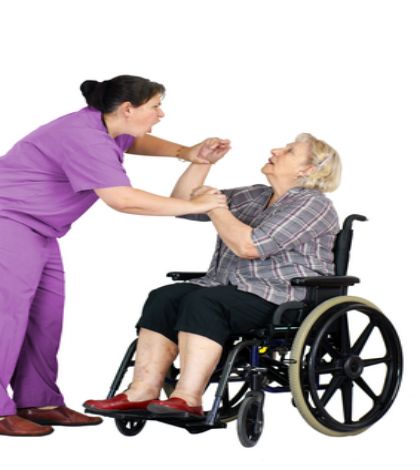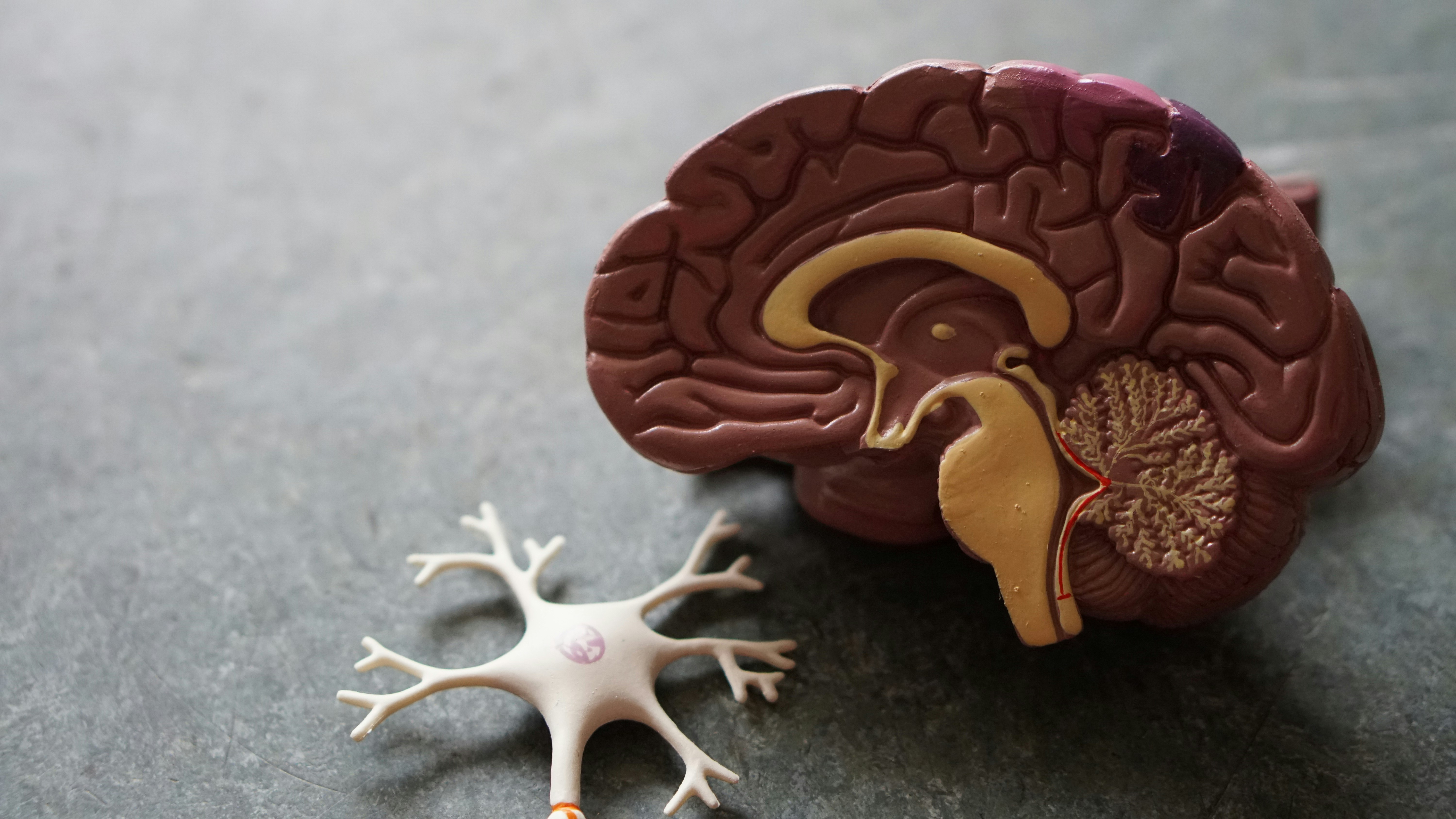Navigating the Silent Language: The Power of Talk vs Touch in Communications with Dementia
Learn how to improve communication with a loved one with dementia by using touch and simple commands. Discover tips for managing challenging behaviors, developing routines, and practicing mindful living to decrease stress in the home.

Understanding Dementia and Communication Challenges
Dementia is an umbrella term that describes a collection of symptoms affecting memory, cognitive function, and social abilities severely enough to interfere with daily life. It is caused by various diseases and injuries that primarily or secondarily affect the brain, such as Alzheimer's disease or stroke.
Overview of Dementia and Its Impact on Communication
One of the most profound impacts of dementia is on an individual's ability to communicate. As dementia progresses, it can affect all aspects of communication, including language, understanding, clarity of speech, and the ability to pick up on non-verbal cues. Here’s a closer look at how these changes manifest:
- Language Skills: The person may have difficulty finding the right words, use familiar words repeatedly, or substitute inappropriate words, making it hard to understand their intended message.
- Speech Production: Slurred speech or the inability to engage in the physical act of speaking can occur, which is often associated with certain types of dementia, such as those that affect motor skills.
- Understanding: Comprehension declines, making it difficult for individuals to understand complex sentences, follow conversations, or grasp abstract concepts.
- Reading and Writing: The ability to read and write deteriorates, which can affect daily activities such as following a recipe or managing household tasks.
- Non-Verbal Communication: There may be a decline in the ability to pick up on or respond to non-verbal signals like facial expressions, body language, and tone of voice, which can lead to misunderstandings.

Common Communication Barriers Faced by Individuals with Dementia
Several common barriers can hinder effective communication with someone who has dementia:
- Memory Loss: Difficulty recalling words or understanding language can lead to frustration and withdrawal from conversations.
- Attention and Focus: Individuals with dementia may have a reduced attention span, making it challenging to stay engaged in a conversation or follow along with a story.
- Processing Delays: The time it takes for a person with dementia to process information and respond can be significantly longer, which can be mistaken for disinterest or unresponsiveness.
- Environmental Distractions: Noisy or cluttered environments can be overwhelming, making it harder for someone with dementia to communicate effectively.
- Emotional Distress: Anxiety, depression, and other emotional responses to the frustrations of communication difficulties can further complicate interactions.
Addressing these challenges requires patience, understanding, and adaptive communication strategies. Here are some ways to improve communication:
- Simplify Language: Use simple words and sentences. Speak clearly and slowly, allowing time for the person to process and respond.
- Be Patient: Give the person time to express themselves without rushing or interrupting.
- Visual Aids: Use pictures or objects to help convey your message or to help the person express themselves.
- Engage in Non-Verbal Communication: Maintain eye contact, use touch to reassure and convey affection, and pay attention to non-verbal cues.
- Minimize Distractions: Find a quiet, comfortable space to communicate without too much background noise or activity.
- Validate Emotions: Acknowledge the person’s feelings even if the content of the communication is unclear. Emotional context often remains understood even when words do not.
- Repeat and Reassure: Gently repeat information if needed, and provide reassurance to help alleviate stress and anxiety.
By adapting communication methods and environment, caregivers and loved ones can create more meaningful interactions and enhance the quality of life for those living with dementia.

Tips for Effective Verbal Communication with Dementia Patients
When communicating verbally with dementia patients, clarity and patience are key. Here are some tips to enhance verbal interactions:
- Speak Clearly: Use a gentle, calm voice. Avoid raising your voice or speaking too rapidly.
- Keep It Simple: Use simple words and sentences. Stick to one idea at a time.
- Be Specific: Instead of open-ended questions, ask yes or no questions or give choices.
- Listen Actively: Encourage them to express their thoughts and listen attentively.
- Avoid Arguments: If they say something you disagree with, let it be. Correcting them may lead to frustration.
Adapting Conversation Techniques for Varying Stages of Dementia
Different stages of dementia require different communication approaches:
- Early Stages: Conversation may still be relatively unaffected, but they may struggle to find the right word or follow complex sentences.
- Middle Stages: Simplify language further and use visual cues to help convey your message.
- Late Stages: At this point, non-verbal communication becomes increasingly important. Use a calm, soothing voice and simple phrases to convey affection and care.
The Significance of Non-Verbal Communication (Touch)
How Touch Can Be a Powerful Communicator in Dementia Care
Touch can convey what words cannot, especially as dementia progresses. It can be used to:
- Convey Comfort: A gentle touch can be reassuring when words may not be understood.
- Express Love and Concern: Holding a hand or a gentle pat can show you care.
- Guide and Direct: A guiding touch can help when verbal instructions are confusing.

Types of Touch and Their Meanings in Non-Verbal Communication
- Therapeutic Touch: Massage or gentle hand-holding which can reduce anxiety and promote relaxation.
- Task-Oriented Touch: Used to assist with tasks such as eating, dressing, or bathing.
- Expressive Touch: Hugs, pats, or strokes to express affection and connection.
Talk vs Touch: Finding the Balance
When to Use Talk Over Touch and Vice Versa
The choice between talk and touch depends on the individual's needs and the context:
- Use Talk when: The person seems to understand and respond to verbal cues, or when they initiate verbal communication.
- Use Touch when: Verbal communication is not getting through, or the person is too agitated or distressed to follow a conversation.
Understanding Individual Preferences and Consent
It’s crucial to be attentive to the person's reactions to touch:
- Observe: Pay attention to their body language and facial expressions. Withdrawn or tense body language may mean the touch is unwelcome.
- Ask for Permission: Verbal consent may not always be possible, so look for non-verbal cues of consent or discomfort.
- Respect Preferences: Some people may not like to be touched in certain ways or areas. Respect these preferences.
In conclusion, effective communication with dementia patients involves a delicate balance of talk and touch. Verbal communication should be simple and patient, while non-verbal communication, especially touch, should be used thoughtfully, always considering the comfort and consent of the individual. By tailoring your approach to the person's current abilities and preferences, you can foster a connection that transcends the limitations imposed by dementia.
The Importance of Empathy in Dementia Communication
Empathy—the ability to understand and share the feelings of another—is vital in communicating with individuals who have dementia. It's about seeing the world from their perspective, recognizing their confusion and frustration, and responding with kindness and support. Empathetic communication acknowledges their feelings, affirms their dignity, and can greatly alleviate the distress that comes from the isolation of dementia.
The Role of Patience in Building Trust and Understanding
Patience is the companion to empathy. It is about giving the person time to process information and respond, without rushing or showing irritation. This creates a calm atmosphere that fosters trust, allowing the individual with dementia to feel understood and valued. Patience demonstrates that the caregiver is there to support them, regardless of the challenges in communication.
Communication Strategies for Caregivers
Training and Resources for Caregivers
Effective communication strategies can be learned. Caregivers can benefit from:
- Workshops and Seminars: These provide hands-on experience and expert advice.
- Online Courses and Materials: They offer flexibility and access to a wealth of information.
- Support Groups: They provide shared experiences and practical tips from other caregivers.
Creating a Dementia-Friendly Environment That Encourages Communication
The environment plays a crucial role in facilitating communication. A dementia-friendly environment:
- Reduces Distractions: A calm, quiet space helps individuals focus on communication.
- Is Safe and Comfortable: Ensuring comfort and safety can reduce anxiety, making communication easier.
- Uses Signage and Labels: Clear, simple signage can help individuals navigate their environment and maintain their independence longer.
Technological Aids in Dementia Communication
The Use of Technology to Support Verbal and Non-Verbal Interactions
Technology offers innovative ways to communicate with those who have dementia:
- Communication Apps: Simplified apps can facilitate expression of needs and desires.
- Virtual Reality: It can be used for reminiscence therapy, helping to trigger memories and conversations.
- Voice-Assisted Devices: These can provide companionship and simple interactions that engage and entertain.
Evaluating the Effectiveness of Communication Aids
When introducing a new technology, it's important to evaluate its effectiveness:
- Monitor Engagement: Does the technology help the individual engage more with others?
- Assess Comprehension: Is there evidence that the person understands the interactions better?
- Observe Behavior Changes: Look for signs of reduced agitation or increased contentment.
Technological aids should always be considered as supplements to, rather than replacements for, human interaction. They should enhance the caregiving experience and not lead to further isolation.
In summary, empathy and patience are crucial in communicating with dementia patients, helping to create a supportive and trusting environment. Caregivers can enhance their communication skills through training and by creating a dementia-friendly environment. Technology can be a valuable aid, but it's important to continually assess its effectiveness and ensure that it serves to enhance human connection, not replace it.
How Surroundings Can Influence the Effectiveness of Talk and Touch
The environment where communication takes place has a profound impact on the efficacy of both verbal and non-verbal interactions with dementia patients. Noise levels, lighting, colors, and spatial arrangements can either support or hinder communication. For instance, a noisy or visually cluttered environment can cause confusion and anxiety in individuals with dementia, making it difficult for them to understand speech or to recognize non-verbal cues. Conversely, a well-lit, serene, and well-organized space can promote clarity and ease in communication.
Adapting Environments to Facilitate Better Communication
Adapting the environment involves:
- Reducing Background Noise: This helps in minimizing distractions and allows the individual to focus on one-on-one interactions.
- Optimizing Lighting: Good lighting can improve the individual’s ability to see facial expressions and gestures, key components of non-verbal communication.
- Simplifying Visual Environments: Clear and contrasted colors help in distinguishing objects, which can reduce stress and confusion.
Legal and Ethical Considerations in Communication
Consent and Ethical Considerations in Touch
Touch can be a powerful tool in communicating with dementia patients, conveying comfort and reassurance. However, it is crucial to consider the individual’s personal history, cultural norms, and preferences. Caregivers must be attuned to the patient's response to touch and seek consent, which can be verbal or gleaned from non-verbal cues, recognizing that a person’s ability to provide informed consent may fluctuate.
Legal Aspects of Communication in Professional Dementia Care
In professional settings, there are legal considerations that govern communication with dementia patients:
- Confidentiality: Respecting the privacy of what they communicate.
- Documentation: Accurate record-keeping of conversations pertaining to the individual’s care.
- Mandatory Reporting: Understanding when and what to report if communication reveals information about abuse or neglect.
Case Studies and Personal Stories
Narratives That Illustrate Successful Communication Strategies
Case studies and personal narratives provide valuable insights into effective communication approaches. For example, a case study might detail how modifying the physical layout of a living space resulted in increased engagement and reduced aggression in a patient with dementia.
Lessons Learned from Real-Life Experiences of Caregivers and Patients
Real-life stories from caregivers can offer lessons such as:
- The Importance of Routine: Establishing a consistent routine can provide a sense of security, making communication easier.
- The Value of Personal History: Understanding a person’s background can inform tailored communication strategies that resonate with them.
- Flexibility and Adaptability: Successful caregivers often share how being flexible and adapting to the changing needs of the individual with dementia is crucial for maintaining effective communication.
Tips for Caregivers
Learn to practice mindful living. This will permit you to remain in control of your emotions. And not attempt to control your family member with dementia.
One might not be able to help how something makes us feel, but we can manage what we do, or how we manifest those feelings. A mindful approach to living can help to deal with those feelings and responses.
Those with dementia are not able to manage or control their behaviors. The centers of the brain responsible for logical thinking and decision-making are harmed. You, as the family caregiver, do not have a damaged brain. You can make a conscious effort to decide how you can control your emotions.
Caregiving is stressful. Work to focus on exactly what your family member with dementia could be experiencing. It is an excellent way to change your perceptions. And therefore your responses.
Take a step back when you are having a difficult time communicating and take a deep breath. Then ask, ”Why is this behavior occurring?” “What is causing this response?”
Is your family member becoming “challenging”? Try to think of their challenging behaviors as a forest fire.
In most worlds, it is important to work to control the environment to avoid the fire. So become an observer and discover ways to avoid negative behaviors.
Never try to attempt to control the actions of the dementia patient. It will only have negative and very challenging results. Eye contact, a reassuring touch, and a smile make all the difference in the world.
Communications With Dementia Means Learn to Keep it Simple
Developing a routine will make dementia home care will be considerably. Routines decrease the likelihood the dementia patient will become exasperated.
Getting dressed, bathing, and everyday tasks that were once easy… can now become very challenging. Tasks that involved many steps must now be broken down, to one step at a time.
You need to begin to use easy, straightforward commands. One command at a time works the best.
Right here’s an example: You can say …
“Put your shoes on and follow me,” while putting your hand out.
or, “Put your shoes on”.
Then when that task is completed… ask them to come with you, as you put your hand out for them to take.
Give step-by-step commands. It simplifies things for our family member with dementia. Do you see the distinction?
This is an easy, dementia home care approach that can save you both much aggravation. And decrease the tension in your home.
Our Resources section can help you find the information and tools that you need. We have courses, videos, checklists, guidebooks, cheat sheets, how-to guides and more.
You can get started by clicking on the link below. We know that taking care of a loved one is hard work, but with our help you can get the support that you need.
Click here to go to Resources Section now!
You might also like this article:








